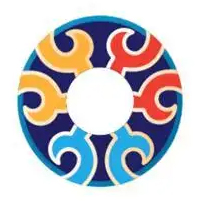The development history and market value of Cloisonné
In the development history of cloisonné, it can be divided into four important periods: the Jingtai period of the Ming Dynasty, the Kangxi and Qianlong periods of the Qing Dynasty, the period from the 1950s to the 1990s after the establishment of New China, and the period from the 17th National Congress of the Communist Party of China to the present.
The development of cloisonné after the founding of the People's Republic of China
After the founding of New China in 1949, the country implemented a policy of peaceful diplomacy. Various friendly countries that established diplomatic relations with China would come to visit Chinese arts and crafts production units. However, at that time, the addresses of various production factories were scattered, and the reception and security work was cumbersome, and the foreign guests were also tired. Therefore, the country decided to establish a comprehensive arts and crafts factory, so that foreign guests only need to visit one place to see various types of arts and crafts and the process of craftsmanship.
In 1960, under the caring guidance of national leaders such as Zhou Enlai and Zhu De, the cloisonné factory was transformed into the Beijing Arts and Crafts Factory. The factory gathered many arts and crafts masters and technicians, and the cloisonné, filigree inlay, and other arts and crafts produced gained great reputation.
Made significant contributions to earning foreign exchange through exports
In the 1970s and 1980s, the Chinese economy was just starting to develop and needed a large amount of economic support for urban construction, rural development, national defense, and education, among others. However, the country had a shortage of resources and didn't have many items that could be exchanged for foreign currency. Therefore, the Beijing Arts and Crafts Factory, with the best cloisonné masters in China, produced a large quantity of cloisonné with gold accents, almost all of which were exported, making a huge contribution to the new China's foreign exchange earnings.
In the 1980s, cloisonné reached its peak in exports and became a pillar product for China's arts and crafts exports to earn foreign exchange.
A market niche
As China entered the market economy, foreign trade exports decreased significantly, causing huge losses to the arts and crafts industry in Beijing. At the same time, with the deepening of reform and the rise of the trend of going into business, the production of arts and crafts also started to go beyond the restrictions of state-owned and collective enterprises. Driven by interests, a large number of low-quality and low-priced products flooded the market. In this situation, the Beijing Arts and Crafts Factory could not keep up with the situation and officially exited the stage of history in 2002.
In 2006, the cloisonné production technique was listed as the first batch of intangible cultural heritage by the country. The application scope of cloisonné has also expanded from the original furnishings to interior and exterior architectural decoration projects, urban landscape projects, packaging of famous products, and people's daily necessities. At the same time, the cloisonné production technique has reached an unprecedented level.
National Gift Status
Since 2013, cloisonné has frequently appeared as national gifts on the world stage. In 2013, the 'Joyful Phoenix Vase' was presented to the President of South Korea and collected by the Musée d'Art Moderne de Paris. In 2014, the 'Four Seas Prosperity Vase' was presented as a national gift to the leaders attending the APEC meeting. In 2015, the 'Twisted Lotus Dragon Ear Vase' was presented as a national gift to Russia. In 2019, cloisonné was used as the champion trophy for the World Snooker Shanghai Masters China Open. Cloisonné has become a messenger of cultural exchange between countries.
Cloisonné has now become a beloved decoration and craft by people around the world, and its presence can be seen in important national occasions.

